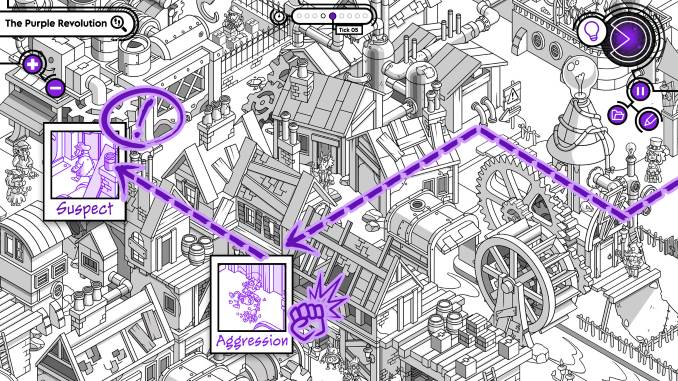Crime O’Clock Turns Where’s Waldo-Style Picture Hunts into a Fun New Puzzle Game

As a kid, I really loved solving Where’s Waldo puzzles. I was never terribly good at them, but I enjoyed the handful that I could handle. Unfortunately for me, I never had the chance to get any better at these kinds of puzzles; call it laziness or elusiveness, but they mostly faded from my life after childhood until Crime O’Clock appeared on my radar some time ago. However, Crime O’Clock goes the extra step, bending the intention behind your otherwise fun search into something else that doesn’t sully the experience, but ever so slightly muddies the waters.
In Crime O’Clock, you’re an unnamed agent assisting an AI who is more or less policing the timeline. Nexus events and anomalies begin sprouting up and it becomes your job as partners to go into these instances, identify who or what is wrong about them, and course-correct as best as you can. Along the journey, it’s revealed that other “rogue” AIs are responsible for these events, and you slowly battle them across the ages. While that sounds more epic in nature, the reality of the situation is that you’ll mostly be staring at ever-shifting environments, tracking characters movements, and solving timed puzzles that represent your AI companions various functions, from identifying figures and their place in the timeline to pulling samples from fruit to see whether or not its poisoned.
Crime O’Clock is denser than it may let on, which proves to be a fun surprise as you push on into its various ages. Beginning in the Information Age (c. 2015 in Milan, where the developer is based), you eventually move backwards and forwards in time to the Steam Age and the far future. However, time-traveling through the ages isn’t the only way Crime O’Clock plays with time: every map consists of 10 “ticks” that your AI will dart between, meaning that the environments shift over time and the characters in them do too. Puzzles will usually begin on the final tick, showing you an unsightly outcome that breaks from the “true timeline,” before you essentially rewind, unravel the mystery and then prevent the crime. Each of these environments is thick with layers upon layers of illustrations meant to confound and delight in equal measure, making for fun, if devious, puzzles. (Small note: I played the game on PC and feel I greatly benefitted, even when I was struggling most, from a screen that could afford to show me lots of the map without stressing my eyes. Though I haven’t played it on the Nintendo Switch, which it’s also releasing for, I can’t imagine the smaller screen will help too much in this regard.) To lighten things, the maps are riddled with pop culture references befitting the times; across the several ages, I found references to Rick and Morty, Aladdin, Prince of Persia, The Mummy, Teenage Mutant Ninja Turtles, Neon Genesis Evangelion, and one mission that quite blatantly riffs on the plots of the two Blade Runner films.

-

-

-

-

-

-

-

-

-

-

-

-

-

-

-

-

-

-

-

-

-

-

-

-

-

-

-

-

-

-

-

-

-

-

-

-

-

-

-

-








































